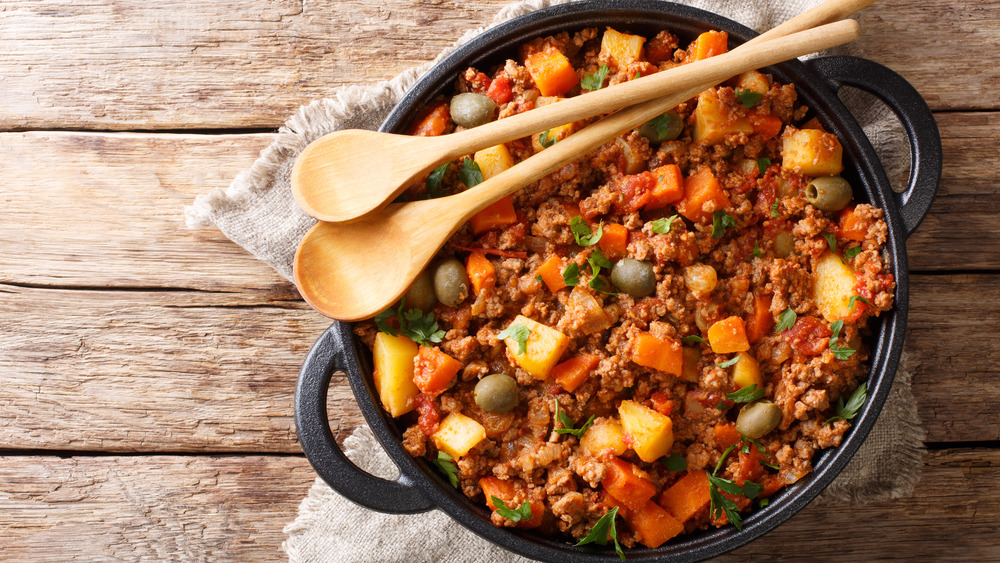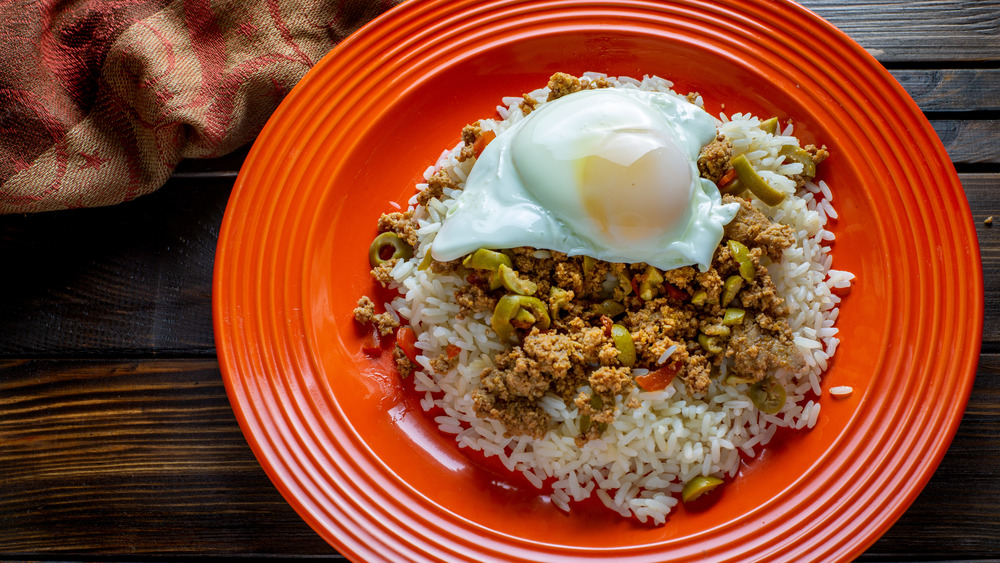The Untold Truth Of Picadillo
A soft, fragrant stew of ground beef and tomatoes spiked with an assortment of contrasting sweet and savory ingredients, picadillo might be the quintessential pot of awesome. Picadillo is slightly saucy, undeniably hearty, and can be eaten straight from the bowl or as a filling for empanadas and soft tacos (via Food and Wine).
The word "picadillo" itself comes from the Spanish word picar, which means to chop or mince, and at first glance, the dish seems to resemble American Sloppy Joes or corned beef hash (via The New York Times). Although touted as classic Cuban comfort food, picadillo can be found all over Latin America and the Caribbean (via Delicious History) and even the Philippines (via Immaculate Bites).
Picadillo is the name of a variety of dishes first originating in Spain, and as is the case with many beloved dishes, it has many regional variations. According to The Domestic Man, the Cuban version generally combines the distinct flavors of cumin, oregano, green olives, capers, and raisins. It's similar to America's chili con carne, but there are sweet and savory nuances, as familiar flavors are balanced with those that are more exotic.
One pot of comfort with multiple variations
According to Chef Gourmet, picadillo is the culinary version of a chameleon — the dish changes depending on its surroundings yet always stays the same. Recipes for picadillo vary by country, and even regions within countries, but the main characteristic is minced or ground meat.
According to Immaculate Bites, Cuban picadillo has a hint of sweetness thanks to the raisins and cinnamon. Mexican picadillo is somewhat spicier and incorporates chili powder, green chiles, potatoes, and carrots. Filipino picadillo (also called giniling), includes carrots, potatoes, raisins, and green peas. And in the Philippines, the dish is served with white rice, fried plantains, and a fried egg (via A Family Feast).
In tropical countries, the dish becomes more elaborate, with the addition of dried fruit, fried bananas, and fried eggs (via Chef Gourmet). In the Dominican Republic, picadillo, also known as carne molida, is used in lasagnas, kipes (the Dominican version of the Lebanese kibbeh), and empanadas (via Chef Zee Cooks). In Puerto Rico, the beefy blend is stuffed into savory pastries known as piononos (via The Domestic Man).
One thing is clear, no matter which variation of picadillo you sample, you'll always enjoy a hearty, satisfying, playful meal.

